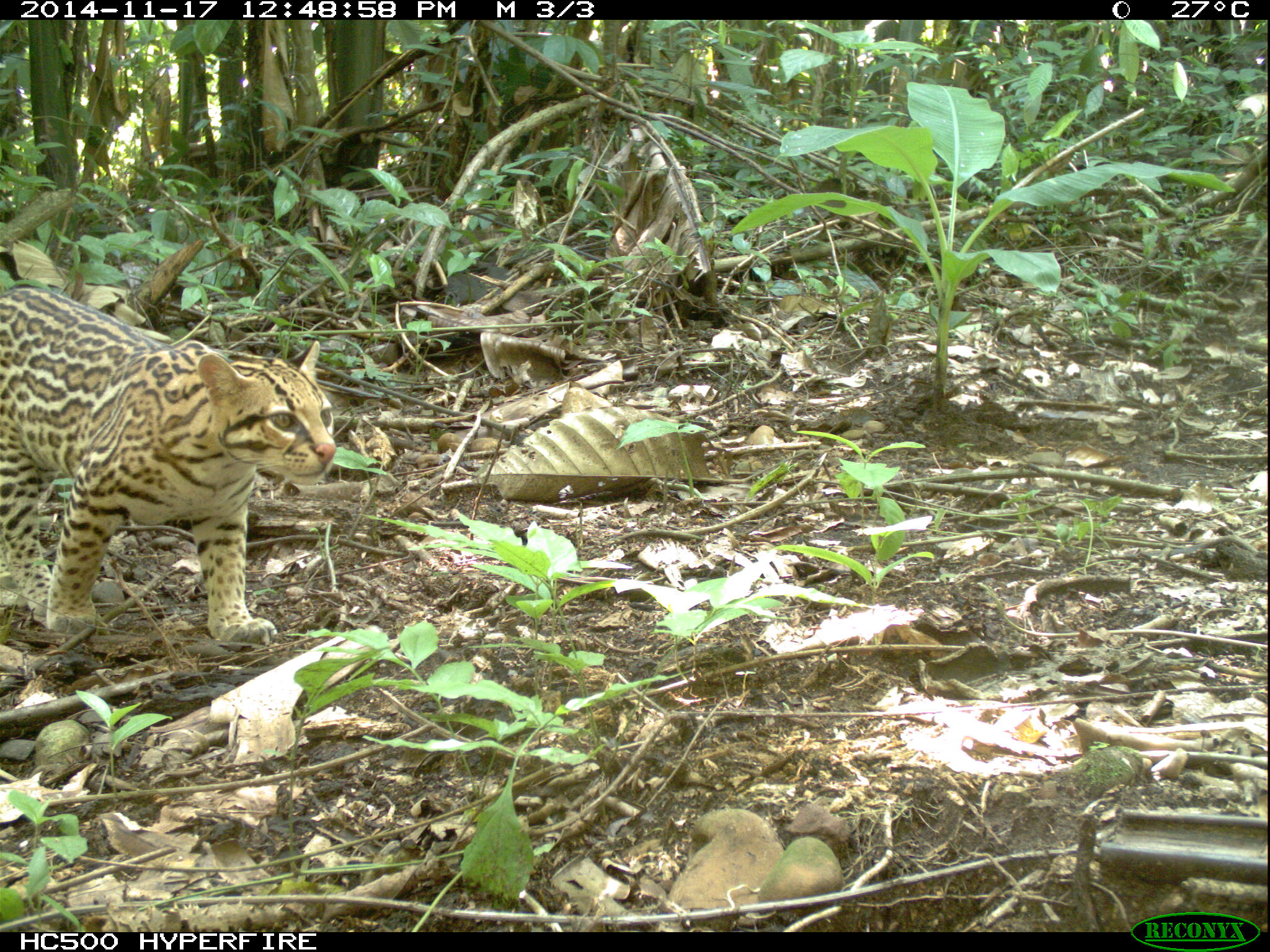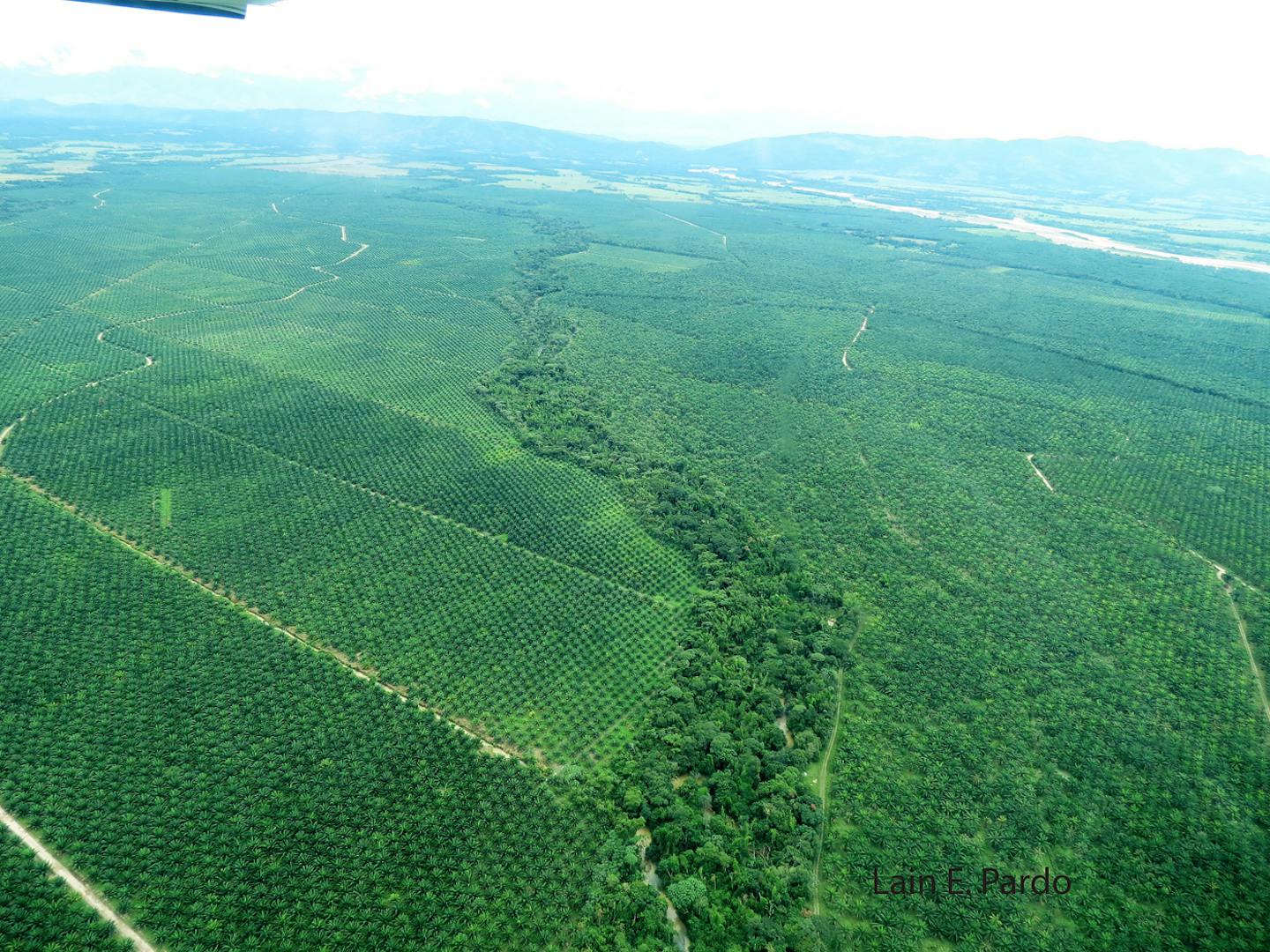How much oil palm can we grow without drastically impacting mammal communities in Colombia?
As oil palm plantations continue to expand in Latin America, identifying critical transitions in land use, at which animal communities can be drastically altered, is crucial for conservation planning.
Rising global demand for energy products has made oil palm one of the biggest threats to biodiversity in Southeast Asia. Now it is rapidly growing in the Latin America, where Colombia is the largest oil palm producer in the Americas with nearly 500,000 ha. Although past conversion of natural biomes to oil palm in this country has not been as dramatic as in Southeast Asia, very little is known about biodiversity in oil palm dominated landscapes of Colombia. Therefore, the identification of possible threats to native fauna and development of management recommendations is limited, but urgently needed.
We used camera traps to detect mammals to investigate how much oil palm can be cultivated before triggering a drastic collapse in these species in the Colombian Llanos. With expansive transformed and semi-natural grasslands, this region has been targeted for large industrial cultivation of oil palm and other crops in the near future . The approach we used is known as threshold analysis and allows us to identify points of drastic change (“tipping points”) in the number of species, abundance, and distribution.
We found that as the proportion of oil palm increases, the number of mammal species decreases, but there was no evidence of a tipping point or threshold. In contrast, we found strong signs of drastic community changes (in abundance and distribution) when oil palm cover in the landscape reached 45-75%. More precisely, 10 out of 15 species showed drastic changes at different levels of oil palm cover, whereas five of them showed only gradual responses such as giant anteaters and deer.

Species specific thresholds of 10 mammalian species in response to the percentage of oil palm coverage in the Llanos region, Colombia. The sized of the circle (change point) is in proportion to the magnitude of the response, black color represent drastic reduction, red color represent positive increase. Species with no evidence for threshold are not shown in the figure. These include the lesser and giant anteaters, jaguarundi, white tailed deer, and raccoon.
The majority of recent oil palm expansion in Colombia has occurred predominantly in lands previously covered by pastures, especially in the Llanos. Furthermore, it is suggested that future oil palm expansion will not overlap significantly with the distribution of threatened species. However, our results suggest that even under these circumstances, there is still a maximum tolerance of mammals to oil palm plantations after which several species—even “common” and currently non-threatened species—are likely to decline abruptly. Usually common species are taken for granted, but from our results we conclude that depending on the configuration of the landscape, some apparently common species have specific levels of resilience.
Our data suggest that a plausibly sustainable oil palm landscape in this region should contain a maximum of 45-75% of oil palm to prevent drastic mammalian community changes. This starting point of the interval is a warning point at which monitoring and specific assessment of biodiversity should be conducted rigorously and different complementary management practices should be implemented to reduce these risks. However, landscapes should never exceed 75% of oil palm cover. In other words, a minimum of 25% of riparian forest is needed to aid conservation of mammal populations in the Llanos region of Colombia.

An ocelot captured by the camera traps which resilience drop when landscapes is cover with more than ~65% of oil palm.
Interestingly, in landscapes with 75% oil palm there is an unexpected drastic increase in the number of foxes, which adds another challenge in terms of conservation, as hyper-abundance of medium size predators can have impacts on the rest of the trophic web.
Mammalian species play crucial roles in ecosystem dynamics. A reduction in the abundance or local extinction of these species would have consequences for forest dynamics due to ecological roles such as seed dispersal capacity and roles in trophic cascades. Moreover, some species are common prey items for larger carnivores in the region such as puma or ocelots. Our results reinforce the importance of restoring and increasing the area of riparian forests. This strategy is more important than solely maintaining current forest cover, or even relying solely on the identification of areas of high conservation value or critically threatened species in these landscapes. This is in part justified as most oil palm landscapes of Colombia have been historically heavily altered with different land uses and hunting (before and after oil palm cultivation), reducing the availability of these features.
Oil palm cultivation is a growing economic sector, but we identify limits to this expansion. Our findings provide guidance for the design of sustainable landscapes within production areas in Colombia to promote the conservation of terrestrial mammals. Implementing these guidelines and other management recommendations will help to minimize the impacts of oil palm on mammal diversity. Colombia has some unique aspects that can help the country become a world leader in sustainable palm oil production, while improving people´s livehoods.

The capybara, one of the most sensitive species their relative abundance and distribution could drop drastically when oil palm cover ~45% of the landscape.


